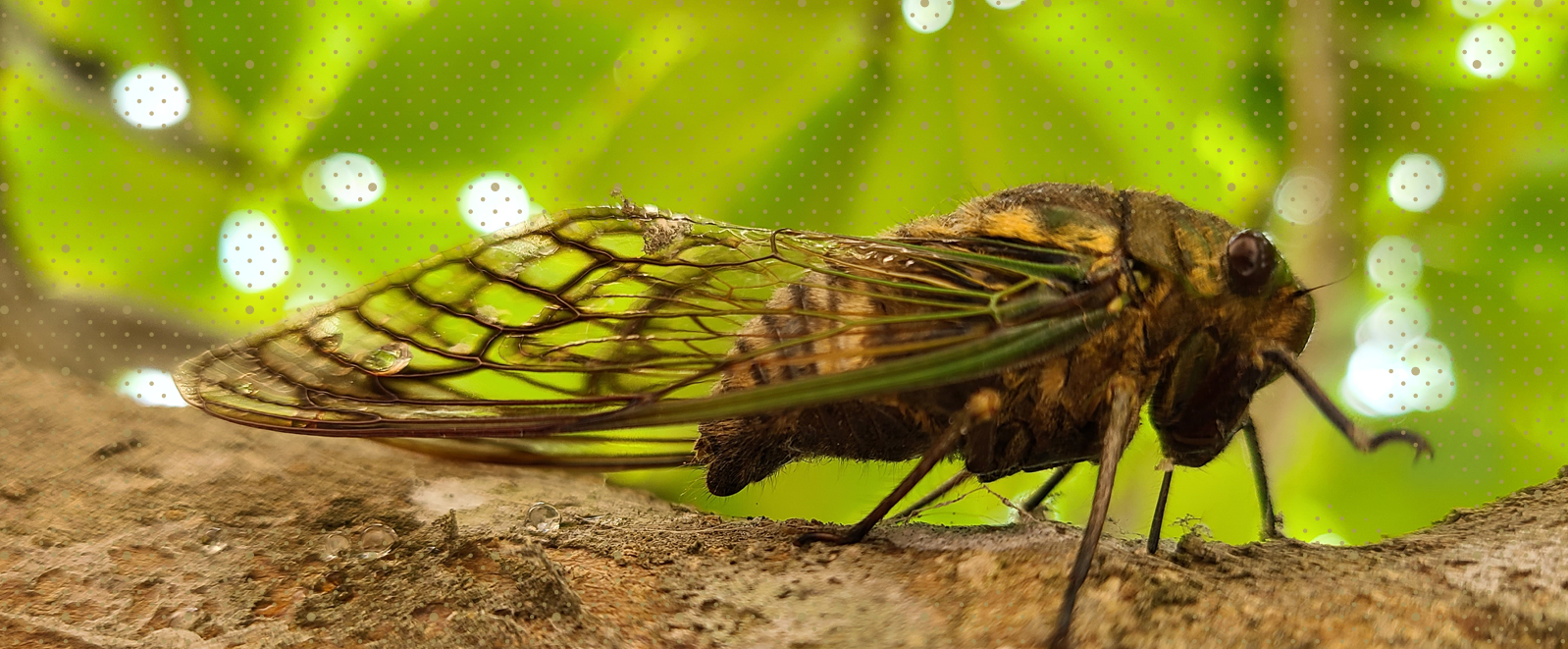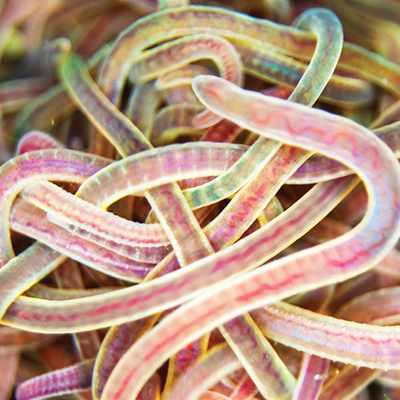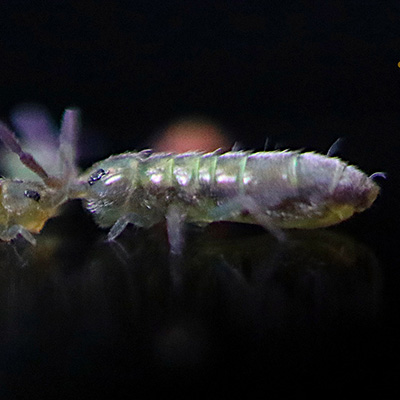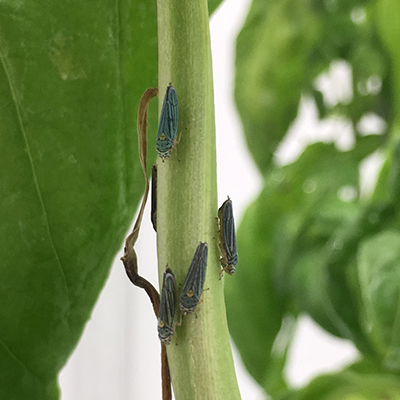Cicadas’ Unique Urination Unlocks New Understanding of Fluid Dynamics
While most small insects and mammals urinate in droplets, cicadas urinate in jets. Researchers from the School of Chemical and Biomolecular Engineering say the finding could be used to create better robots and small nozzles.
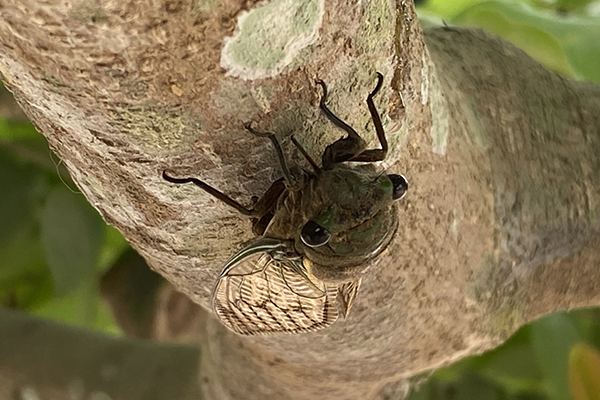
Cicadas are the soundtrack of summer, but their pee is more special than their music. Rather than sprinkling droplets, they emit jets of urine from their small frames. For years, Georgia Tech researchers have wanted to understand the cicada’s unique urination.
Saad Bhamla, an assistant professor in the School of Chemical and Biochemical Engineering, and his research group hoped for an opportunity to study a cicada’s fluid excretion. However, while cicadas are easily heard, they hide in trees, making them hard to observe. As such, seeing a cicada pee is an event. Bhamla’s team had only watched the process on YouTube.
Then, while doing fieldwork in Peru, the team got lucky: They saw numerous cicadas in a tree, peeing.
This moment of observation was enough to disprove two main insect pee paradigms. First, cicadas eat xylem sap, and most xylem feeders only pee in droplets because it uses less energy to excrete the sap. Cicadas, however, are such voracious eaters that individually flicking away each drop of pee would be too taxing and would not extract enough nutrients from the sap.
“The assumption was that if an insect transitions from droplet formation into a jet, it will require more energy because the insect would have to inject more speed,” said Elio Challita, a former Ph.D. student in Bhamla’s lab and current postdoctoral researcher at Harvard University.
“The assumption was that if an insect transitions from droplet formation into a jet, it will require more energy because the insect would have to inject more speed.” —Elio Challita

Second, smaller animals are expected to pee in droplets because their orifice is too tiny to emit anything thicker. Because of cicadas’ larger size — with wingspans that can rival a small hummingbird’s — they use less energy to expel pee in jets.
“Previously, it was understood that if a small animal wants to eject jets of water, then this becomes a bit challenging, because the animal expends more energy to force the fluid’s exit at a higher speed. This is due to surface tension and viscous forces. But a larger animal can rely on gravity and inertial forces to pee,” Challita said.
The cicadas’ ability to jet water offered the researchers a new understanding of how fluid dynamics impacts these tiny insects —and even large mammals. The researchers published this challenge to the paradigm as a brief, “Unifying Fluidic Excretion Across Life from Cicadas to Elephants,” in Proceedings of the National Academy of Sciences the week of March 11.
“Our research has mapped the excretory patterns of animals, spanning eight orders of scale from tiny cicadas to massive elephants. This work not only deepens our comprehension of biological functions but also paves the way for unifying the underlying principles that govern life’s essential processes.” —Saad Bhamla
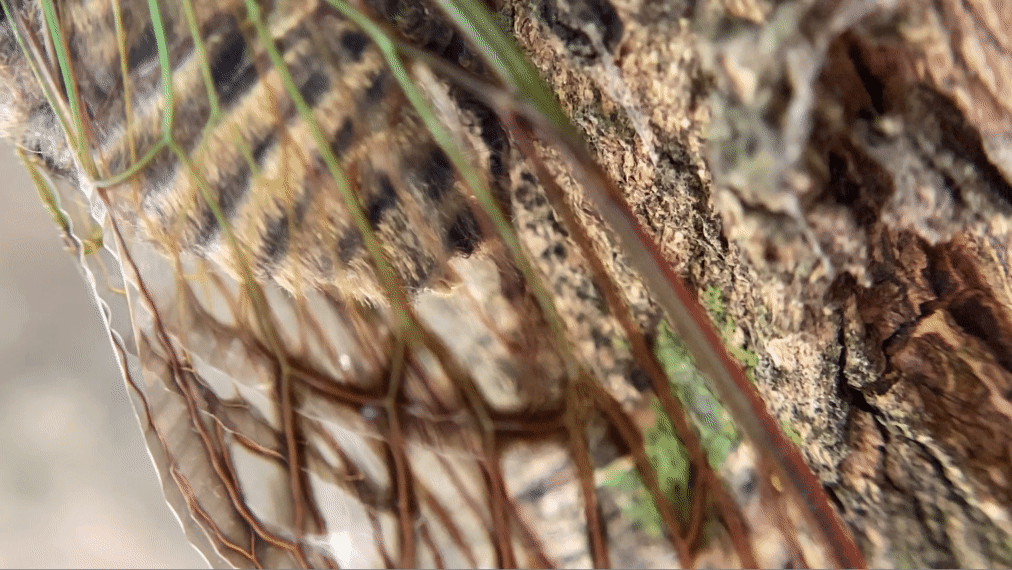
For years, the research group has been studying fluid ejection across species, culminating in a recent arXiv preprint that characterizes this phenomenon from microscopic fungi to colossal whales. Their framework reveals diverse functions — such as excretion, venom spraying, prey hunting, spore dispersal, and plant guttation — highlighting potential applications in soft robotics, additive manufacturing, and drug delivery.
Cicadas are the smallest animal to create high-speed jets, so they can potentially inform applications in making jets in tiny robots/nozzles. And because their population reaches trillions, the ecosystem impact of their fluid ejection is substantial but unknown. Beyond bio-inspired engineering, Bhamla believes the critters could also inform bio-monitoring applications.
"Our research has mapped the excretory patterns of animals, spanning eight orders of scale from tiny cicadas to massive elephants,” he said. “We've identified the fundamental constraints and forces that dictate these processes, offering a new lens through which to understand the principles of excretion, a critical function of all living systems. This work not only deepens our comprehension of biological functions but also paves the way for unifying the underlying principles that govern life’s essential processes."
“Biology and the diversity across forms of life have the potential to drive advances in fields from healthcare to manufacturing and other key industries,” said Miriam Ashley-Ross, program director at the U.S. National Science Foundation, which helped fund the work. “This work shows that even the way in which organisms get rid of waste can provide new insights into fluid dynamics that spur innovation in soft robotics and ways to handle fluid at small scales in all manner of manufacturing. It also shows how much we still have to learn about organisms like cicadas, which are often covered in the news.”
This research was funded by a MIRA grant from the National Institutes of Health (R35GM142588) and a grant from the National Science Foundation (POLS-2310691).
Citation: Elio J. Challita & M. Saad Bhamla. “Unifying Fluidic Excretion Across Life from Cicadas to Elephants,” Proceedings of National Academy of Sciences, March 2024.
Any opinions, findings, and conclusions or recommendations expressed in this material are those of the authors and do not necessarily reflect the view of the sponsoring agencies.
DOI: https://doi.org/10.1073/pnas.2317878121
Writer: Tess Malone
Media Contact: Ayana Isles | aisles3@gatech.edu
Video: Georgia Tech College of Engineering
Photos and GIF: Courtesy of Elio Challita and Saad Bhamla

